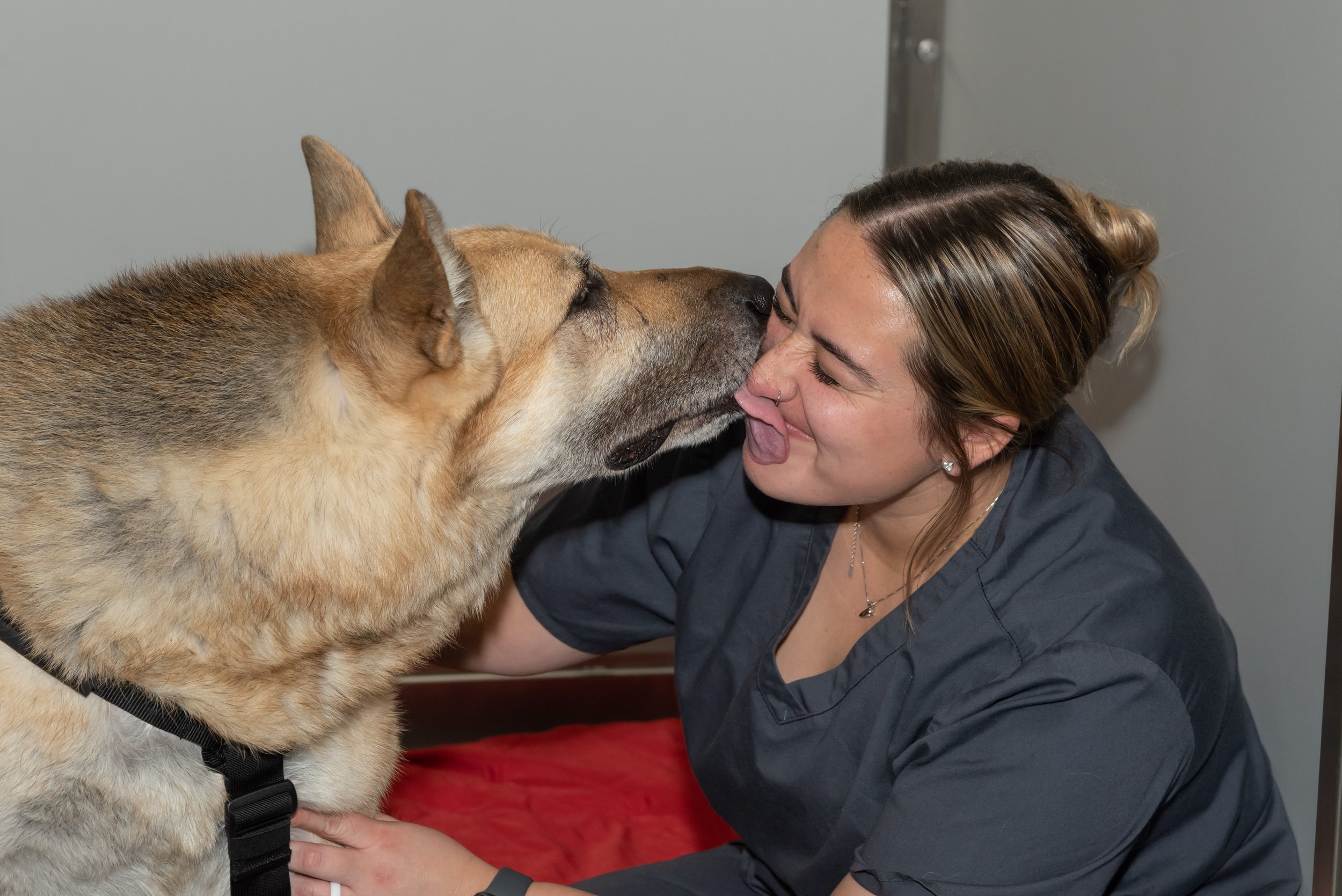
MRI & CSF
Cutting-Edge Veterinary MRI Services in Maryland
A veterinary magnetic resonance imaging (MRI) scan is a non-invasive diagnostic tool that uses a strong magnetic field and radiofrequency waves (not radiation) to provide detailed pictures of internal organs and tissues. In our neurology setting, we specifically use it to visualize the brain, spinal cord, nerves, and their surrounding tissues.
At VNIoC, we are well known for providing Veterinary MRI services in Maryland. We have been involved in this critical imaging service for over 20 years. We know how important prompt diagnosis can be on case outcomes, and that is why we have an on-site GE 1.5T 16-Channel MRI that we utilize to aid in diagnosing and treating patients. In so many cases, hours count in successful outcomes in veterinary neurosurgery.
MRI greatly improves our ability to see pathology that can not be found with general radiography or CT. Disorders such as slipped spinal discs, brain tumors, and even some congenital abnormalities can be readily visualized and diagnosed via veterinary MRI. For a patient that has become suddenly paralyzed due to a slipped spinal disc, having our on-site MRI means that we can get the patient from their initial neurologist evaluation to an MRI for diagnosis and on to surgery within a matter of hours.
MRI requires patients to be completely still for about an hour for most scans. This means that our veterinary MRI patients must be anesthetized for their scans. At VNIoC, we pride ourselves on the high level of patient care that we offer, which is why we utilize veterinary MRI-compatible monitoring equipment that transmits wirelessly over bluetooth. This allows us to continuously monitor your pet’s vital signs throughout their MRI scan.
Additionally, we have a dedicated Anesthesia and Imaging Veterinarian as well as a Licensed Veterinary Technician continuously monitoring anesthesia during the MRI scan. Our experienced team monitors EKG, blood pressure, blood oxygen saturation (SPO2), and other respiratory parameters to ensure the safety of patients that are anesthetized. We tailor each anesthetic plan to the individual patient so that we can make the MRI procedure as safe as possible for every pet.
Give Your Furry Friend the Best Care! Schedule their Veterinary MRI with us today!
VETERINARY MRI & SPINAL TAP IN TOWSON, MARYLAND
WHY ISN’T X-RAY ALWAYS GOOD ENOUGH?
Clinical radiography is an exceptionally vital tool in the diagnostic process for our patients. It is a fast and efficient way to rule out very simple paths of diagnosis.
Radiography is wonderful in evaluating anatomic regions of stark contrast in density, but reveals its limitations when evaluating areas of minute tissue density differences. For example, when doing radiographs of the chest, X-ray provides a good representation of the anatomy because the majority of tissue is either air (no density) or bone (high density). There is little in the way of tissue between those two extremes, so abnormalities in the lung field are very obvious. The same goes with imaging of bones. In evaluating for fractures, the radiograph shows the presence or absence of bone and reveals a fracture as a dark line in the cortical structure.
The radiography purists out there might be upset by that comment—however, if we were able to remove all the contents of your body, lay them out side-by-side, and take a radiograph, then we would see that each structure does have a unique tissue density to an extent. Unfortunately, though, when all those structures are mixed together in your body and we take a two-dimensional radiograph, those densities are averaged together and produce an image with a significantly lower dynamic image contrast.
We are able to improve this somewhat with computed tomography (CT), but CT still falls short in the area of soft tissue evaluation. Even though CT gives a wider contrast range, the tissue structures are still so close that our brain averages them together and they look more similar than they actually are. MRI, however, does not rely solely on the physical density of tissue to create an image. It uses characteristic information from the tissue based on chemical makeup, position, resonant frequency, and magnetic susceptibility (to name a few) in order to give a more comprehensive breakdown of the structures involved.
Though diagnostic radiography is a vital part of the diagnostic process, rarely should we depend on it to give us all of the answers we desire. In this day and age with the resources we have available, we owe it to ourselves and our clients to utilize every opportunity to further diagnosis and promote health and longevity.
SPINAL TAP (CSF TAP)
CSF, the abbreviation for cerebrospinal fluid, is a fluid that surrounds the brain and spinal cord and functions to protect and support the central nervous system (CNS). Another important function is that it helps remove waste from the normal CNS metabolism. Spinal fluid is constantly being produced in the brain and absorbed back by the body.
A CSF (or spinal) tap is used to evaluate the microscopic environment of the CNS. Some conditions diagnosed with CSF analysis include encephalitis, meningitis, CNS cancer, trauma, polyradioculoneuritis, and hemorrhage. A spinal tap is usually interpreted in light of the patient, the presentation, history and results of other tests.
The CSF tap is typically performed after the MRI is complete. The supervising doctor will view the images, and if it is indicated, will do this while the patient is still under anesthesia. It is a generally safe procedure that can yield valuable diagnostic information.
Spinal taps are performed under general anesthesia, so the patient won’t feel any discomfort during the procedure. Side effects of spinal taps are rare, but can include bleeding, difficulty breathing, and rarely, brain herniation, and death.
When your pet or patient needs a veterinary MRI and/or spinal tap, contact Veterinary Neurology and Imaging of the Chesapeake today.






